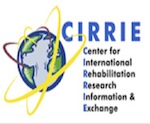


Google Scholar citation report
Citations : 5373
ASEAN Journal of Psychiatry received 5373 citations as per google scholar report
ASEAN Journal of Psychiatry peer review process verified at publons
| Journal Name | ASEAN Journal of Psychiatry (MyCite Report) | ||||
|---|---|---|---|---|---|
| Total Publications | 456 | ||||
| Total Citations | 5688 | ||||
| Total Non-self Citations | 12 | ||||
| Yearly Impact Factor | 0.93 | ||||
| 5-Year Impact Factor | 1.44 | ||||
| Immediacy Index | 0.1 | ||||
| Cited Half-life | 2.7 | ||||
| H-index | 30 | ||||
| Quartile |
|
- Anxiety Disorders
- Behavioural Science
- Biological Psychiatry
- Child and Adolescent Psychiatry
- Community Psychiatry
- Dementia
- Community Psychiatry
- Suicidal Behavior
- Social Psychiatry
- Psychiatry
- Psychiatry Diseases
- Psycho Trauma
- Posttraumatic Stress
- Psychiatric Symptoms
- Psychiatric Treatment
- Neurocognative Disorders (NCDs)
- Depression
- Mental Illness
- Neurological disorder
- Neurology
- Alzheimer's disease
- Parkinson's disease
Abstract
NO LAUGHING MATTER: �??LAUGHING GAS�?? ADDICTION IN SINGAPORE
Author(s): Ashvini Selvaraj & Kim Eng WongObjective: Recreational use of nitrous oxide (N2O) or ‘laughing gas’ inhalation is a common phenomenon in countries like UK and US where it is associated with music festivals and parties. However, as far as we know, recreational N2Ouse in Singapore has hitherto not been reported in the press or scientific journals. We report the first case of N2O use and addiction in a young Singaporean male who was introduced to it by a friend from a Western country where its use is prevalent. Methods: A 20-year-old Singaporean male with an existing psychiatric diagnosis of Major Depression presented with a 3-year history of solitary regular N2O inhalation that escalated from infrequent low dose use to the daily highdose use which he was unable to control. He exhibited symptoms of dependence, which included preoccupation, tolerance, withdrawal, craving and difficulty in cutting down. No major adverse medical complications were noted. Results: The patient was assessed to have Nitrous Oxide Dependence and was given regular individual counselling sessions with a trained addictions counsellor to motivate him to cut down his use in the short-term and to stop completely in the longer term. Conclusion: This case highlights not only the first reported case of N2Ouse and dependence in Singapore but also the first case seen in a Singapore national addictions treatment facility. Doctors, families, schools, and the community in general need to be aware of, and be prepared for, this practice that has come to Singapore and the region. While extant literature suggests that dependence is uncommon, we report the first case that clearly demonstrated psychological dependence.


























